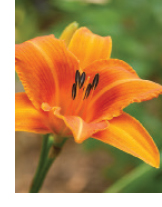As the dog days of summer approach, many woody ornamentals that heralded the new spring with flashy flower displays are past their blooming primes and are now settling into a verdant slumber in the landscape. Dogwoods are no exception. After their cheerful flowers fade, the only thing left is green leaves that, in the visual sameness of surrounding plants, render these small trees almost invisible.
However, there are dogwood cultivars that refuse to spend the rest of the growing season unnoticed. These selections insist on being seen during the hottest of times and beyond into the fall with variegated foliage that stands out in a pleasingly elegant way. Here are a few examples of such pretties worth searching for at local garden centers and online:
‘Wolf Eyes’ (Matures to 15 feet high and wide). Being from the Cornus kousa clan, it blooms later than native dogwoods. The leaves also set it apart from typical dogwoods, with light green centers pleasantly flanked by white edges. In the fall, this fancy foliage warms to a pinkish red color.
‘Variegata’ (30 feet high and wide). From China, this Cornus controversa selection wraps itself in fresh green leaves splashed on the sides with light yellow bands and puffs of un-dogwood-like lacy white blooms in the spring. The leaves then turn creamy white on the margins and mid-green in the centers as summer approaches.
‘Cherokee Sunset’ (25 feet high and wide). A Cornus florida cultivar that goes long on color with pinkish flower bracts and new leaves tinged in faded red. The foliage matures into splashes of pleasant green and muted yellow, and then salutes autumn in a blaze of purples, reds and pinks.
‘Variegated Stellar Pink’ (20 feet high and wide). A cross between C. florida and C. kousa cultivars, it is also a pink-flowering dogwood but with white to light cream edges on green leaves. In the fall, the foliage still commands attention as the green parts of the leaves darken to purple, while the white streaks brighten to a hot pink.
‘Elegantissima’ (8 feet high and 6 feet wide). Also sold as ‘Argenteo-marginata’ — another mouthful — this low-growing Tatarian dogwood (Cornus alba) cultivar dangles green leaves dripping white streaks along their edges off deep crimson branches that, after leaf fall, intensify to a glowing red in the low winter sun.
L.A. Jackson is the former editor of Carolina Gardener Magazine. Want to ask L.A. a question about your garden? Contact him by email at: lajackson1@gmail.com.
To Do in the Garden:
June
- Clip spent rhododendron blooms to prevent seed formation. This conserves the plant’s energy for next year’s flower show. For the same reason, deadhead the spent flowers of daylilies and reblooming roses.
- Watch for leaf galls on azaleas and camellias. The easiest way to deal with these bits of botanical ugliness that misshape leaves is to simply pick off and dispose of any that are found. Do not compost.
- Are you prepared for Japanese beetles? If you use Japanese beetle traps, place them far, far away from any plants that have become these varmints’ favorite meals.
- Want a novel yet satisfying way to deal with Japanese beetles? Shake any afflicted plants and then swat the beetles that fly off with a tennis racket-shaped electric bug zapper!
- Don’t have time to dead-head spent flowers? Consider growing continuous blooming plants such as alyssum, impatiens, ageratum, salvia, cleome, scabiosa, lobelia and vinca that don’t need constant prunings.
July
- Pumpkin seeds started at the beginning of this month outdoors should mature into plump jack-o-lanterns just in time for the Halloween season.
- Production from the vegetable garden should be in high gear now, but, to keep the crops coming, harvest okra, cucumbers, squash, beans and indeterminate tomatoes once or twice a week.
- Prune lower leaf suckers on tomato plants to save more energy for fruit production. However, resist cutting off any upper foliage that shields tomato fruit from the sun because this natural covering helps prevent sunscald.
- Going on vacation? Have a neighbor check in on your garden every few days to irrigate if necessary and pick any mature vegetables or spent flowers. Also, ask to keep the bird bath filled with fresh water.
Timely Tip
 The ubiquitous orange-flowering daylily patches lighting up roadsides at this time of year are filled with Hemerocallis fulva, an Asian species introduced long ago for use as a garden ornamental and erosion control.
The ubiquitous orange-flowering daylily patches lighting up roadsides at this time of year are filled with Hemerocallis fulva, an Asian species introduced long ago for use as a garden ornamental and erosion control.
Commonly known as tawny daylily, orange daylily or, unflatteringly, ditch lily, this fast-spreading plant has become naturalized in 42 states — in some locations, to the point of being invasive. So think twice about adding this daylily to your landscape because, unless the rapidly increasing rhizomes aren’t frequently divided, it can become a bully in the garden.
Also keep in mind there have been many daylily hybrids developed over the years that show off more impressive, longer lasting displays of orange blooms and are clump-forming, meaning they spread at a much slower rate.
Photo at right: Hemerocallis fulva
- These Dogwoods Beg for Attention
- Hanging Out at Home
- Exclusive Dish: Flavors Restaurant’s Cantaloupe Soup
- Restaurant Profile: The Mason Jar Tavern
- Cary Magazine Movers & Shakers: Barry Richburg
- Cary Magazine Movers & Shakers: Dr. Kevin Prue
- Cary Magazine Movers & Shakers: Apara Pochiraju
- Cary Magazine Movers & Shakers: Zankhna Parekh
- Cary Magazine Movers & Shakers: Joy Hughes Pantzer
- Cary Magazine Movers & Shakers: Karla Nantz
- Cary Magazine Movers & Shakers: Adam Mitchell
- Cary Magazine Movers & Shakers: Joshua Mauney
- Cary Magazine Movers & Shakers: J. Blake Massengill
- Cary Magazine Movers & Shakers: B.J. Lambdin
- Cary Magazine Movers & Shakers: Christina Kodesh
- Cary Magazine Movers & Shakers: Amanda Kimball
- Cary Magazine Movers & Shakers: Barak Henis
- Cary Magazine Movers & Shakers: Zaher El-Assi
- Cary Magazine Movers & Shakers: Paige Dick
- Cary Magazine Movers & Shakers: Kyle Denis
- Cary Magazine Movers & Shakers: Kenneth Combs
- Cary Magazine Movers & Shakers: Travis Wright Colopy
- Cary Magazine Movers & Shakers: Shawn Chase
- Cary Magazine Movers & Shakers: Adam Buchanan
- Cary Magazine Movers & Shakers: Martha Brown
- Cary Magazine Movers & Shakers: Jackie Bedard
- Cary Magazine Movers & Shakers: Mandy Becker
- Cary Magazine Movers & Shakers: Trey Bailey
- Cary Magazine Movers & Shakers: Daniel Whittaker
- Cary Magazine Movers & Shakers: Louis Vitiello Jr.
- Cary Magazine Movers & Shakers: Brigitte Specht
- Cary Magazine Movers & Shakers: Michelle Smith
- Cary Magazine Movers & Shakers: Christopher Saleh
- Camp Champs
- Wheels Up!
- A Perfect Summer
- Private: Ry-Con Service Dogs







